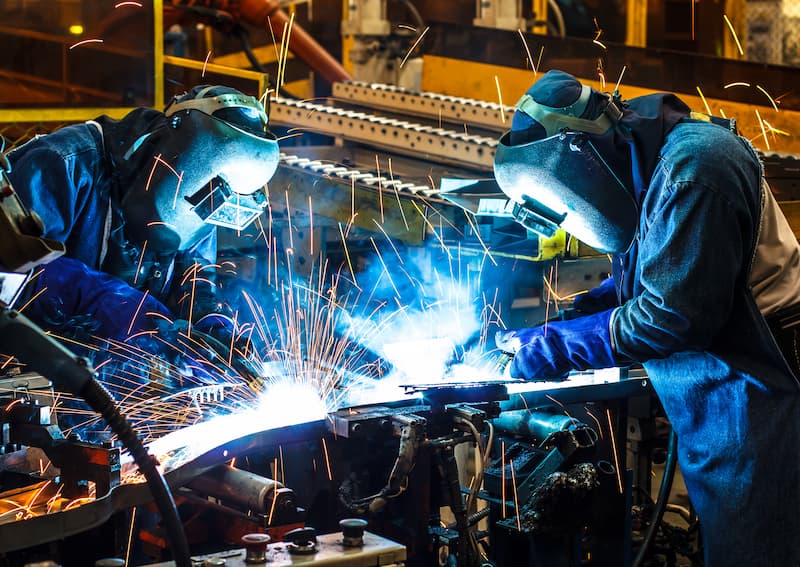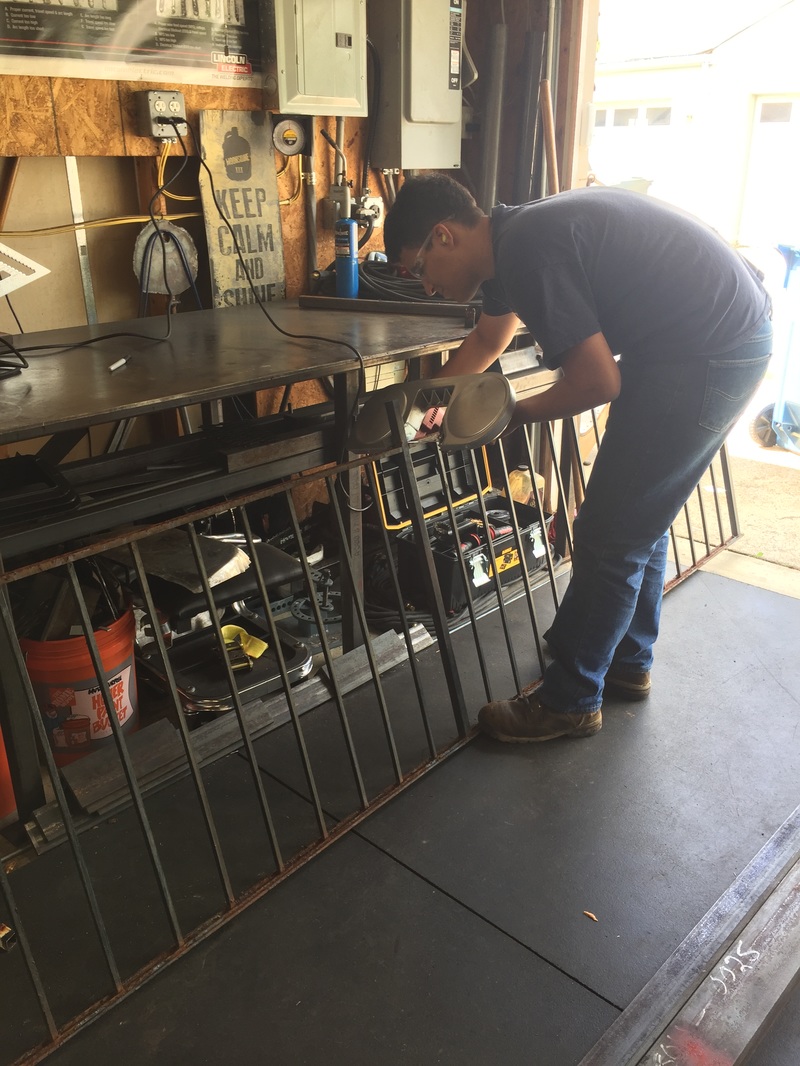Common Welding Repair Work Issues and Just How to Address Them Efficiently
Welding repair work usually encounter a series of issues that can jeopardize the stability of the end product. Typical problems include insufficient penetration, porosity, and misalignment, to name a few. Each defect offers distinct difficulties that require certain techniques for resolution. Recognizing these problems is crucial for welders aiming to boost their skills and outcomes. This discussion will check out these typical welding repair work concerns and effective methods to resolve them.
Inadequate Infiltration
Poor infiltration happens when the weld metal stops working to fully fuse with the base material, causing weak joints and potential architectural failures. This issue commonly comes from not enough warm input, inaccurate electrode angle, or inappropriate welding speed. Welders may encounter inadequate penetration because of a mistake of the essential parameters for a particular product thickness or kind. Furthermore, contamination on the base product's surface area can prevent efficient bonding, exacerbating the trouble. To deal with insufficient penetration, welders must ensure proper settings on their devices and maintain a clean job surface. Regular examination of welds is suggested to identify any type of shortages early, enabling for timely adjustments and the prevention of compromised structural stability in bonded assemblies.
Porosity
Porosity is a common issue in bonded joints that materializes as tiny gas bubbles caught within the weld steel. This issue can jeopardize the integrity of the weld, leading to decreased strength and prospective failing under tension. Montana Mobile Welding and Repair Belgrade Fabrication. Porosity usually develops from contamination, wetness, or inappropriate welding techniques, which permit gases to leave into the liquified weld swimming pool. To resolve porosity, welders ought to assure correct surface prep work, preserve a tidy functioning setting, and make use of ideal welding specifications. Additionally, choosing the appropriate filler product and securing gas can reduce gas entrapment. Normal assessment and screening of welds can help recognize porosity early, assuring timely corrective actions are taken, therefore maintaining the high quality and integrity of the bonded structure
Imbalance
Imbalance in welding can occur from numerous variables, including improper arrangement and thermal development. Understanding the origin is important for reliable resolution. Numerous correction techniques are offered to straighten parts and assure structural integrity.
Reasons for Misalignment
Welding imbalance commonly originates from a variety of underlying issues that can compromise structural honesty. One primary reason is incorrect fit-up of components prior to welding, which can lead to gaps and uneven surfaces. Variations in thermal expansion throughout the welding process can also cause distortion, particularly if the materials being signed up with have various coefficients of growth. In addition, insufficient fixturing and clamping might fail to hold elements firmly in location, causing activity during welding. Poorly maintained equipment, consisting of welding machines and tools, may present inconsistencies in the weld bead, further adding to misalignment. Driver mistake, stemming from inadequate training or experience, can likewise play a considerable role in creating misaligned welds.

Improvement Strategies Offered
Dealing with misalignment effectively calls for a combination of restorative strategies customized to the particular issues handy. One typical approach is making use of components or jigs to hold elements in the appropriate position throughout welding, ensuring regular alignment. Furthermore, pre-heating the materials can help in reducing distortion and improve fit-up. For significant misalignment, mechanical realignment methods, such as utilizing hydraulic jacks or clamps, can be utilized to correct the setting prior to welding. Post-weld warm therapy might likewise be required to ease stress and anxieties brought on by imbalance. Careful evaluation and adjustment throughout the configuration phase can stop misalignment concerns from coming to be considerable issues, advertising a smoother welding procedure and improving total structural honesty.
Distortion
Distortion is a common obstacle in welding that can emerge from different variables, including unequal heating & cooling. Comprehending the root causes of distortion is vital for carrying out effective avoidance strategies. Resolving this issue not only enhances architectural honesty but also boosts the overall top quality of the weld.
Root causes of Distortion
When subjected to the intense warmth of welding, products usually undertake modifications that can bring about distortion. This sensation mostly arises from thermal development and tightening during the welding procedure. As the weld area heats up, the material expands; upon air conditioning, it contracts, which can develop inner stresses. Furthermore, uneven heating throughout a workpiece can intensify these stress and anxieties, resulting in bending or bending. The kind of product likewise plays a substantial duty; metals with varying thermal conductivity and coefficients of growth may respond in a different way, resulting in unpredictable distortions. Poor joint design and inadequate fixturing can add to imbalance throughout welding, boosting the probability of distortion. Understanding these causes is important for reliable welding repair service and avoidance methods.
Prevention Techniques
Effective avoidance strategies for distortion during welding concentrate on controlling heat input and making sure appropriate joint style. Preserving a constant warm input helps to reduce thermal expansion and tightening, which can cause distortion. Using strategies such as pre-heating the workpiece can additionally minimize the temperature gradient, advertising uniform home heating. In addition, selecting appropriate joint styles, such as T-joints or lap joints, can enhance security and decrease tension concentrations. Applying correct fixturing to safeguard the work surfaces in position better aids in keeping placement throughout the welding procedure. Lastly, staggered welding series can disperse heat much more uniformly, avoiding local distortion. By using these approaches, welders can considerably reduce the likelihood of distortion and boost the general high quality of their welds.
Fracturing
Fracturing is an usual concern encountered in welding fixings, often arising from numerous aspects such as inappropriate air conditioning rates, product option, or insufficient joint prep work. The occurrence of cracks can significantly endanger the integrity of the weld, resulting in potential failings during procedure. To address this issue, welders have to initially analyze the source, guaranteeing that products work and properly picked for the particular application. Additionally, regulating the air conditioning rate during the welding procedure is necessary; fast cooling can generate anxiety and lead to click over here now splitting. Appropriate joint design and prep work additionally add to decreasing the danger. Applying these methods can enhance weld top quality and toughness, eventually lowering the probability of cracking in completed weldments.

Incomplete Blend
A substantial concern in welding fixings is insufficient fusion, which happens when the weld steel does not effectively bond with the base product or previous weld passes - Fabrication. This issue can bring about weaknesses in the joint, possibly endangering the integrity of the welded framework. Variables adding to incomplete blend consist of not enough warm input, inappropriate welding technique, and contamination of the surface areas being joined. To resolve this concern properly, welders should assure proper pre-weld cleaning and surface area preparation, as well as adjust their welding parameters to accomplish appropriate infiltration and combination. Regular assessment during the welding process can additionally aid identify incomplete blend early, permitting prompt corrective measures to improve the overall top quality of the weld
Overheating
While welding fixings can enhance architectural honesty, overheating offers a substantial difficulty that can cause pvc welding product degradation. Excessive warmth during welding can alter the mechanical properties of steels, leading to reduced toughness, boosted brittleness, and bending. This sensation is especially crucial in high-stress applications where architectural reliability is critical. Recognizing getting too hot can include aesthetic inspections for discoloration or distortion, in addition to keeping an eye on temperature level throughout the welding process. To mitigate the risks related to getting too hot, welders need to employ proper methods, such as regulating heat input, adjusting traveling rate, and using suitable filler materials. In addition, applying pre- and post-weld warmth treatments can assist restore product residential properties and boost the overall quality of the repair, making sure long-lasting performance and safety and security.
Regularly Asked Questions
What Are the Common Indications of a Welding Flaw?

Just How Can I Evaluate My Welds for Quality?
To evaluate welds for high quality, one can utilize visual evaluations, ultrasonic testing, and radiographic methods. Each method assures architectural integrity, identifies issues, and validates adherence to defined requirements, ultimately improving the reliability of the welded joints.
What Security Safety Measures Should I Take While Welding?
When welding, one need to focus on safety and security by putting on proper individual safety devices, guaranteeing correct ventilation, safeguarding flammable materials away, preserving a clean office, and understanding surroundings to avoid crashes and injuries.
Can I Fix a Weld Without Redesigning the Entire Joint?
Repairing a weld without renovating the entire joint is feasible, depending upon the damages (Montana Mobile Welding and Repair Belgrade). Strategies such as grinding, adding filler product, or utilizing a welding procedure can efficiently resolve specific flaws while maintaining the surrounding framework
What Equipment Are Crucial for Efficient Welding Services?
Important tools for efficient welding repairs consist of a welding equipment, wire brush, mill, protective equipment, clamps, and filler products. Each device plays a crucial role in ensuring top quality and security throughout the repair process. Porosity typically arises from contamination, moisture, or improper welding techniques, which allow gases to run away into the liquified weld swimming pool. Improperly kept tools, including welding devices and tools, may present variances in the weld grain, further adding to imbalance. When subjected to the extreme warmth of welding, materials often undertake modifications that can lead to distortion. Breaking is an usual problem experienced in welding repair work, typically resulting from various factors such as incorrect cooling prices, material selection, or insufficient joint prep work. A significant problem in welding repair work is incomplete fusion, which takes place when the weld metal does not appropriately bond with the base product or previous weld passes.